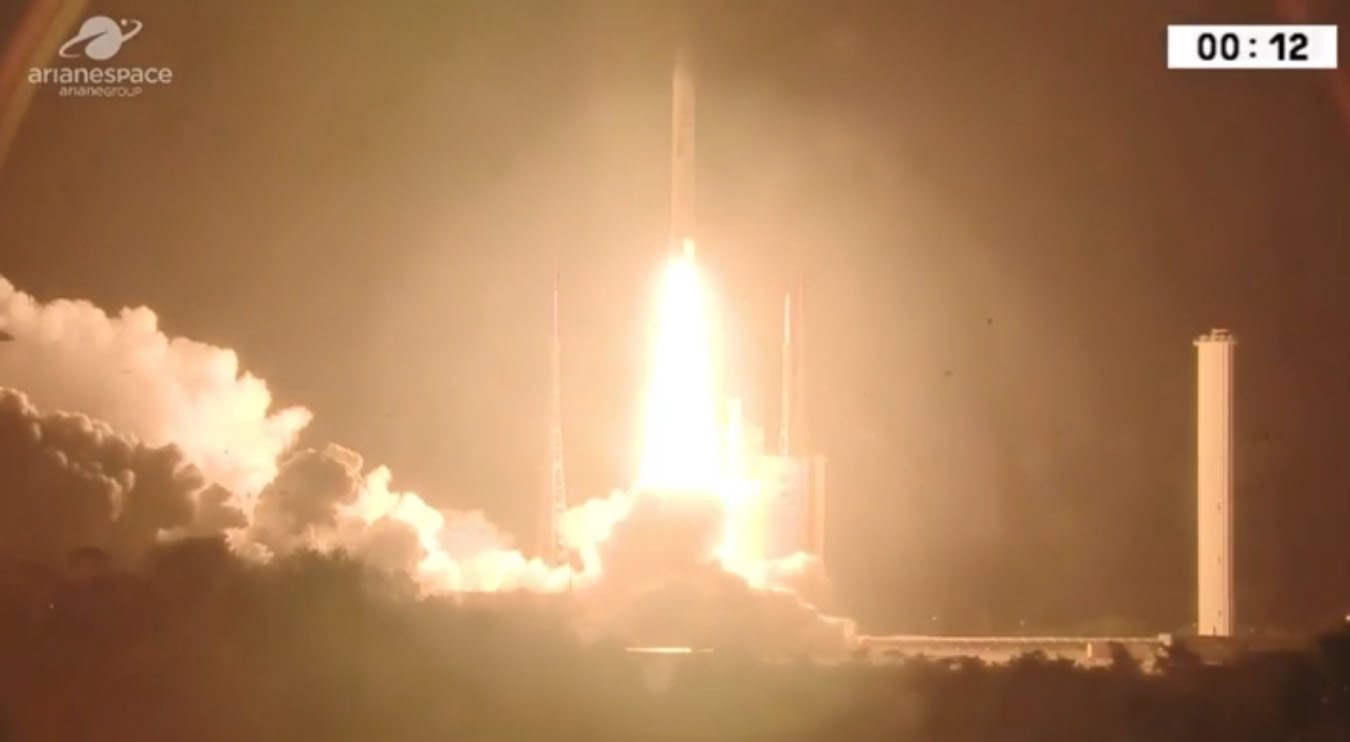Ariane 5 Rocket Delivers Satellites, NASA GOLD to Orbit Despite Launch Anomaly
Two commercial satellites and a NASA Earth-observation instrument managed to reach orbit despite a scare during liftoff today (Jan. 25).
NASA's Global-scale Observations of the Limb and Disk (GOLD) instrument and the SES-14 and Al Yah 3 communications satellites launched atop an Arianespace Ariane 5 rocket this evening from Guiana Space Center in French Guiana. GOLD, which is a bit bigger than a microwave, rode piggyback on SES-14.
About 9 minutes after liftoff, the outlook turned grim: Arianespace lost contact with the rocket's upper stage, leading to speculation that the payloads had been lost. But everything turned out all right in the end, according to representatives of the France-based launch provider. [NASA Goes for 'GOLD' to Scan the Border of Earth and Space]
"A few seconds after ignition of the upper stage, the second tracking station located in Natal, Brazil, did not acquire the launcher telemetry. This lack of telemetry lasted throughout the rest of powered flight," Arianespace representatives wrote in a statement a few hours after launch.
"Subsequently, both satellites were confirmed separated, acquired and they are on orbit. SES-14 and Al Yah 3 are communicating with their respective control centers," they added. "Both missions are continuing."
GOLD will study Earth's upper atmosphere, especially the temperatures in the ionosphere and thermosphere, from its perch in geostationary orbit, about 22,000 miles (35,400 kilometers) up. The instrument's observations should allow researchers to better understand this region and how it's affected by solar activity, NASA officials have said.
GOLD is the first NASA science mission ever to fly as a "hosted payload" on a commercial satellite, agency officials said.
Breaking space news, the latest updates on rocket launches, skywatching events and more!
"Being on hosted commercial satellites gives us, NASA, a new cost-effective tool in our toolbox for doing science," Elsayed Talaat, heliophysics chief scientist at NASA Headquarters in Washington, D.C., said in a teleconference yesterday (Jan. 24). "There are still many times when we would have to build the satellite and do the launch ourselves, but the more tools we have to get into space, the better for our overall science program."
Follow Mike Wall on Twitter @michaeldwall and Google+. Follow us @Spacedotcom, Facebook or Google+. Originally published on Space.com.

Michael Wall is a Senior Space Writer with Space.com and joined the team in 2010. He primarily covers exoplanets, spaceflight and military space, but has been known to dabble in the space art beat. His book about the search for alien life, "Out There," was published on Nov. 13, 2018. Before becoming a science writer, Michael worked as a herpetologist and wildlife biologist. He has a Ph.D. in evolutionary biology from the University of Sydney, Australia, a bachelor's degree from the University of Arizona, and a graduate certificate in science writing from the University of California, Santa Cruz. To find out what his latest project is, you can follow Michael on Twitter.

